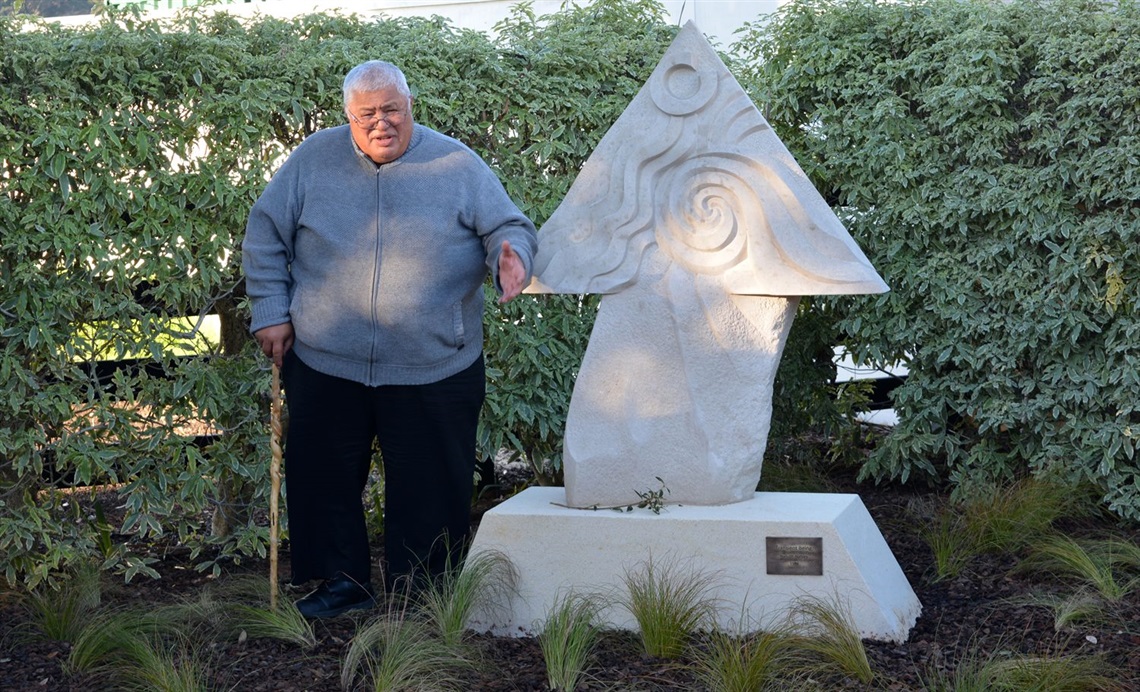Transient Being sculpture comes to rest at Pukenamu
Published on 13 May 2021

Kaumātua John Maihi conducting a blessing for the sculpture
On Thursday, 13 May a celebration was held in the Whanganui District Library courtyard to welcome Hamish Horsley’s Transient Being sculpture which has travelled halfway across the world to its final resting place.
Sculptor Hamish Horsley was born and raised in Whanganui but went overseas to study sculpture at London’s City and Guilds and the Royal College of Art, graduating in the early 1980s. He then spent 38 years based in London working as a professional artist before returning to live in Whanganui in 2015.
Transient Being was carved in 1997 and, true to its name, was exhibited at several locations in England before being loaned to New Zealand House in London, where it was on display for 20 years.
When New Zealand House underwent renovations in 2019 Hamish Horsley offered to gift the sculpture to Whanganui District Council’s public art collection.
With a cost of over $17 000 for international art shippers to freight the sculpture to Whanganui, a fundraising appeal was launched by Bill Milbank, curator of Milbank Gallery and former director of the Sarjeant Gallery.
Hamish Horsley says the sculpture arrived in Whanganui at the beginning of March 2020, right in time for the start of the COVID-19 Level Four lockdown, so there was just time to open the box and have a look at it before it went back into storage.
The council’s parks team worked with the artist to identify a suitable space for the sculpture and to organise the landscaping.
A new block of Oamaru stone was purchased to position the sculpture on and the artist spent several weeks in the library courtyard re-carving part of the sculpture’s base.
Bill Milbank says the Transient Being sculpture “evolves absolutely from the artist’s life of exploration and discovery; marked by his remarkable ability in finding place, no matter where his feet took him.”
He explains that the sculpture alludes to the impermanence of all things and signifies change and regeneration.
Hamish Horsley says the upper triangular form on the sculpture is perceived as a symbol of sanctuary, of the whare or home, while the lower block of stone, rough-hewn from the quarry, represents earth. The two are symbolically interdependent, flowing from one to the other.
“On the left side of the work, the transient being flees upwards towards this apex of the triangle, seeking home and refuge.
“But from the right comes this great force, this cyclonic energy that will soon overwhelm, bringing change, pushing the transient being out towards new horizons.”
Hamish Horsley has many large public artworks on display in parks and squares in the United Kingdom, as well as in other parts of Europe, the Middle East and South Asia – however, Whanganui is the only place in New Zealand where his contemporary stonework is displayed.